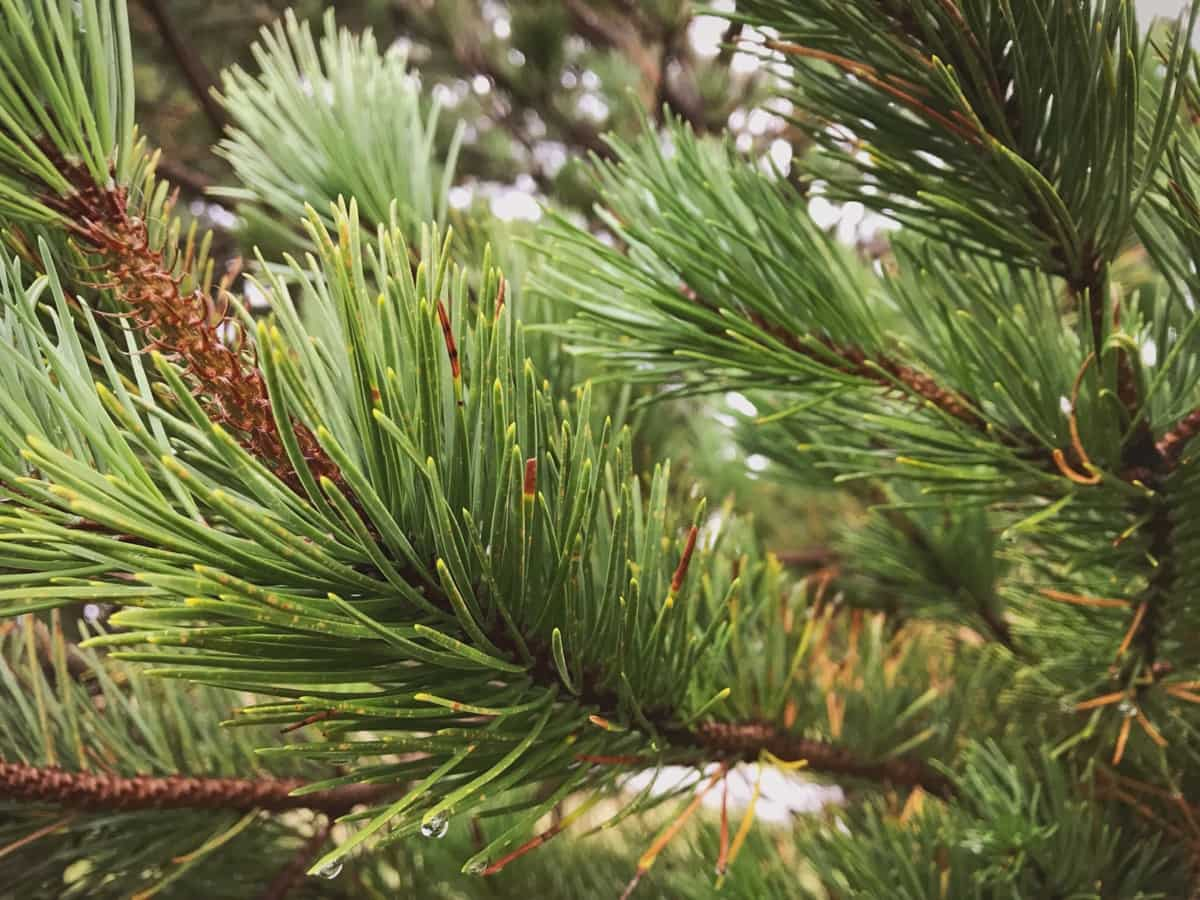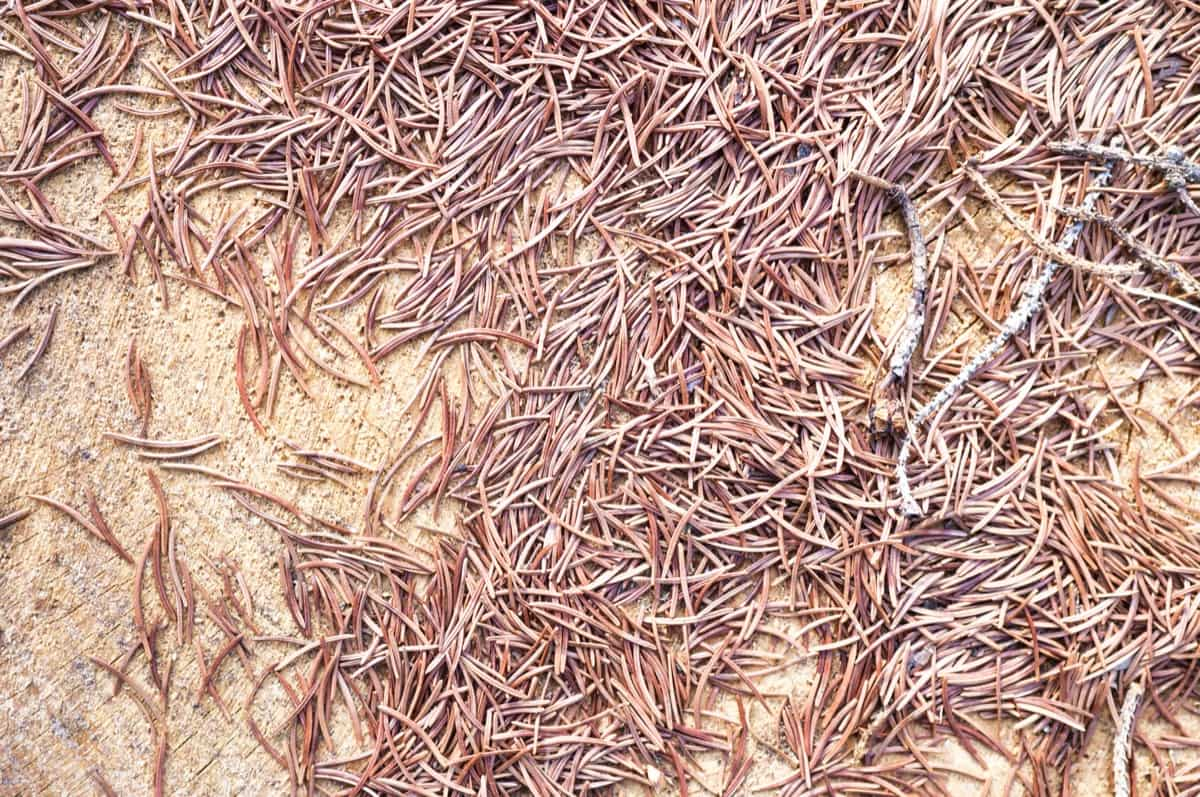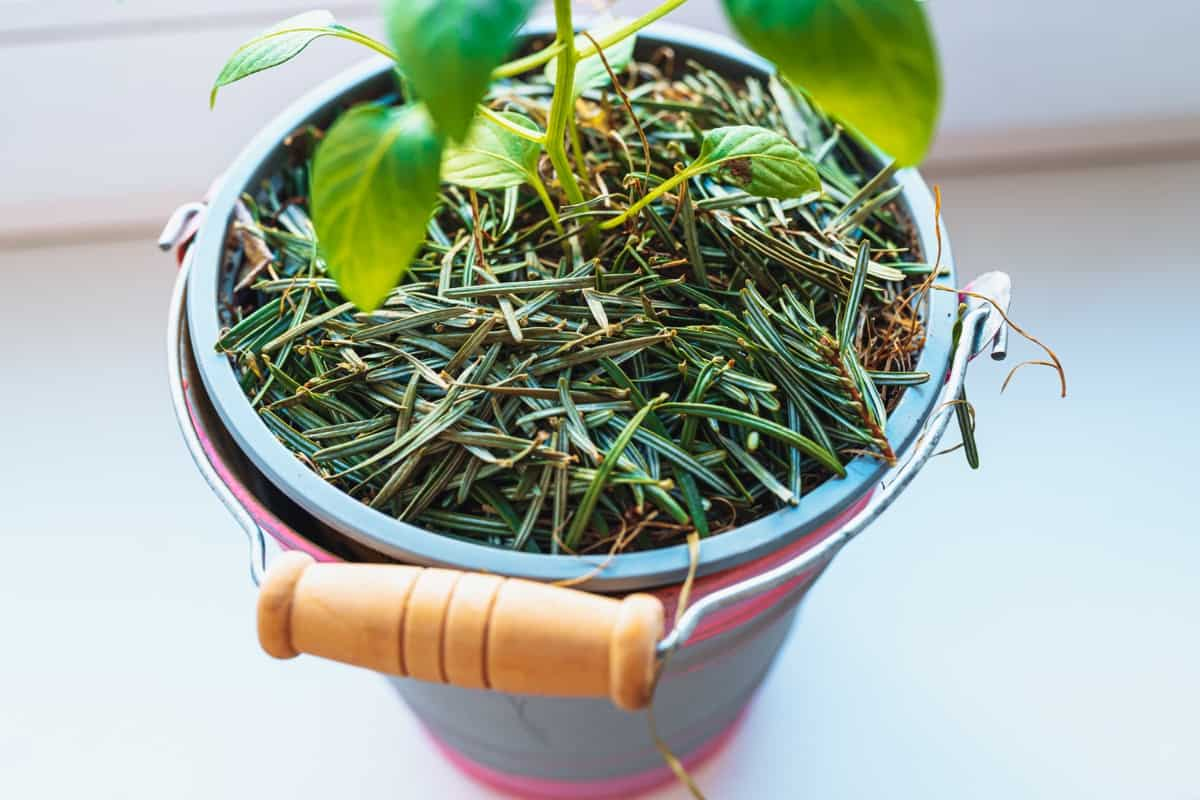Pine needle mulch provides numerous advantages for maintaining healthy and thriving plants in your garden or flower beds. The key advantage of using pine needle mulch is its ability to insulate plants during extreme weather conditions. It acts as a natural barrier, shielding them from harsh temperatures in both summer and winter. This insulation helps to maintain a more stable environment for plant roots, preventing damage caused by sudden temperature fluctuations.

Homemade DIY Pine Needle Mulch Soil Fertilizer
What is Pine Needle Mulch?
Pine needle mulch, also called pine straw, is an organic material derived from pine trees’ fallen needles. These thin and flexible needles create a protective layer when spread over the soil surface, offering a range of benefits to your plants.
What Are the Ingredients Needed to Make Pine Needle Mulch?
To make pine needles as mulch, you only need pine needles. Pine needles are readily available in many areas and can be easily collected from the ground or trimmed from low-hanging branches. When gathering your pine needles, aim for dry ones that have fallen naturally. Avoid using green or freshly-cut needles as they may still contain sap which can hinder decomposition.
Choosing healthy-looking and clean needles without signs of disease or pests is also important. Once you’ve gathered a sufficient amount of pine needles, it’s time to prepare them for use as mulch. Start by removing any debris like twigs or cones that may have been collected along with the needles. You can do this by hand or use a rake to separate them. Next, spread out the cleaned pine needles in an even layer over your desired area.
Recipe/Prepare Pine Needle Mulch at Home
- Making your pine needle mulch at home is a simple and cost-effective way to nourish your plants naturally.
- Gather some pine needles from your yard or a nearby forest. Ensure to collect them when dry, as wet needles can be more difficult to work with.
- Next, spread out the collected pine needles on a clean surface, allowing them to air dry for several days. This will help remove excess moisture and make the needles easier to handle.
- Once the needles are dry, gather them up and place them in a sturdy bag or container. Use scissors to chop the needles into smaller pieces. This will speed up the decomposition method and make it easier for the nutrients from the pine needles to be absorbed by your plants.
- After chopping the pine needles, use them as mulch around your garden beds or mix them into compost piles for added organic matter. Remember that pine needle mulch works best when applied in thin layers, about two inches thick.
- You can create homemade pine needle mulch that not only benefits your plants but also reduces waste by repurposing materials found in nature.
How Does Pine Needle Mulch Work?
- Pine needle mulch works wonders for your plants and garden. First, it acts as a protective layer that insulates the soil, keeping it warm in winter and cool in summer.
- Additionally, pine needle mulch helps to retain moisture in the soil. It forms a barrier that prevents water evaporation, ensuring your plants stay hydrated even during dry spells. This can save you time and effort in watering your garden.
- Another advantage of pine needle mulch is its ability to enrich the soil. As the needles break down over time, they release organic matter into the soil, improving its fertility and nutrient content. This natural fertilization process promotes healthy plant growth and vibrant blooms.
- Furthermore, pine needle mulch suppresses weed growth by blocking sunlight from reaching weed seeds or existing weeds. This means less time spent pulling out unwanted plants and more time enjoying your beautiful garden.
What Plants Do Not Like Pine Needles?
| Roses | Boxwood Plant |
| Grey and fluffy foliage | Asters |
| Artichokes | Lavender |
| Green Artichoke |
How Often Should You Use Pine Needle Mulch for Your Plants?
To ensure the best results for your plants, it is recommended to reapply the pine needle mulch every 3-4 months. This will help maintain consistent protection and insulation around your plants throughout the year. However, the application frequency may vary depending on climate, soil conditions, and plant types.
Best Time to Apply and How Much Pine Needle Mulch Should You Use for Your Garden Plants
- The best time to apply pine needle mulch natural fertilizer is in the spring or fall when the soil is cool and moist. This allows the needles to break down slowly and release their nutrients over time.
- It’s important not to go overboard with pine needle mulch. A layer of one to two inches is sufficient for most plants. Too much mulch can prevent water from reaching the roots and cause other issues.
- It’s also important to consider the specific needs of your plants. Some plants need more acidic soil, while others thrive in a neutral pH. Pine needles are naturally acidic, particularly beneficial for acid-loving plants like azaleas, rhododendrons, and blueberries.
In case you missed it: Homemade Garlic and Pepper Spray for Pests and Disease Control: Recipe for Organic Benefits of Plants

How Long Does It Take for Pine Needle Mulch to Work for Your Plants?
The time it takes for pine needle mulch to work its magic on your plants can vary depending on a few factors. Fresh pine needles typically take about 5 to 6 weeks to compost and fully release their nutrients into the soil. The pine needles break down slowly during this time, gradually releasing organic matter and essential minerals.
Benefits of Plants of Using Pine Needle Mulch in the Home Garden
- One of the main advantages is that it acts as a natural and organic fertilizer, enriching the soil with essential nutrients. As the pine needles break down over time, they release these nutrients into the soil, promoting healthy plant growth.
- Another use for pine needles in the garden is their ability to retain moisture in the soil. The mulch layer helps reduce evaporation, keeping the ground moist for longer. This is beneficial during hot summer months when water conservation is important.
- In addition to retaining moisture, pine needle mulch is a plant-insulating layer. This can protect delicate roots from extreme temperature fluctuations and improve overall plant health.
How To Use Pine Needles in Gardens & Flowerbeds?
Pine needle mulch creates a barrier against weed growth by blocking sunlight from preventing them from germinating. This natural weed control method reduces resource competition between weeds and flower plants. Using pine needle mulch adds an attractive aesthetic element to your garden beds. The rich brown color and texture of the needles create a visually appealing contrast against green foliage or colorful flowers.
Safety Precautions When Using Pine Needle Mulch
- Pine needles can be sharp and prickly, so wearing gloves will help protect hands from any potential injuries.
- Some plants may not tolerate the acidity of pine needle mulch, so it’s best to avoid using it around these sensitive species.
- Dry pine needles are highly flammable, so keep them away from any open flames or sources of heat.
What Pests and Diseases Can Pine Needle Mulch Control?
- Pine needle mulch provides a layer of protection and moisture retention for your plants and has the added benefit of controlling certain pests and diseases.
- One common pest that pine needle mulch can help control is slugs. These slimy creatures are known to feast on young seedlings and tender plant leaves, causing damage to your garden. However, the prickly texture of pine needles is a deterrent for slugs, making it more difficult for them to crawl onto your plants.
- Another advantage of using pine needle mulch is its ability to suppress weed growth. Additionally, pine needle mulch can deter certain insects that are harmful to plants. The scent of pine needles repels aphids and other sap-sucking insects.
How to Store Pine Needle Mulch?
- Gathering the pine needles in a clean, dry container or bag. Make sure the container is sealed to prevent moisture from getting in.
- Store the container in a cool place, away from direct sunlight. Excessive heat and moisture can cause the mulch to decompose or develop mold.
- Avoid storing the pine needle mulch near chemicals or strong odors, as they can be absorbed into the mulch and potentially harm your plants.
- Check on the stored mulch periodically to ensure no signs of decay or pest infestation.
- If you have an abundance of pine needles, consider composting them instead of storing them long-term. Composting will help break down the materials faster and create nutrient-rich soil for your garden.
In case you missed it: How to Grow Mint from Cuttings: DYI in 10 Simple Steps

Conclusion
Pine needle mulch helps retain moisture in the soil. The layer of needles prevents water evaporation and reduces weed growth. They release organic matter that enriches the soil structure and supports beneficial microbial activity. This creates an ideal growing environment for your plants.
- Feed Your Flock for Less: Top 10 Tips to Save on Chicken Feed
- Ultimate Guide to Ossabaw Island Hog: Breeding, Raising, Diet, and Care
- Hatching Answers: The Top 10 Reasons Your Chickens Aren’t Laying Eggs
- Eggs and Economics: Breaking Down the Cost of Raising Backyard Chickens
- Defend Your Greens: Proven Methods to Keep Iguanas Out of Your Garden
- Ultimate Guide to Cinnamon Queen Chicken: A Comprehensive Guide for Beginners
- Ultimate Guide to California Tan Chicken: Breeding, Raising, Diet, Egg-Production and Care
- Ultimate Guide to Marsh Daisy Chicken: Breeding, Raising, Diet, and Care
- 10 Types of Chicken Farming Businesses You Can Start for Profits